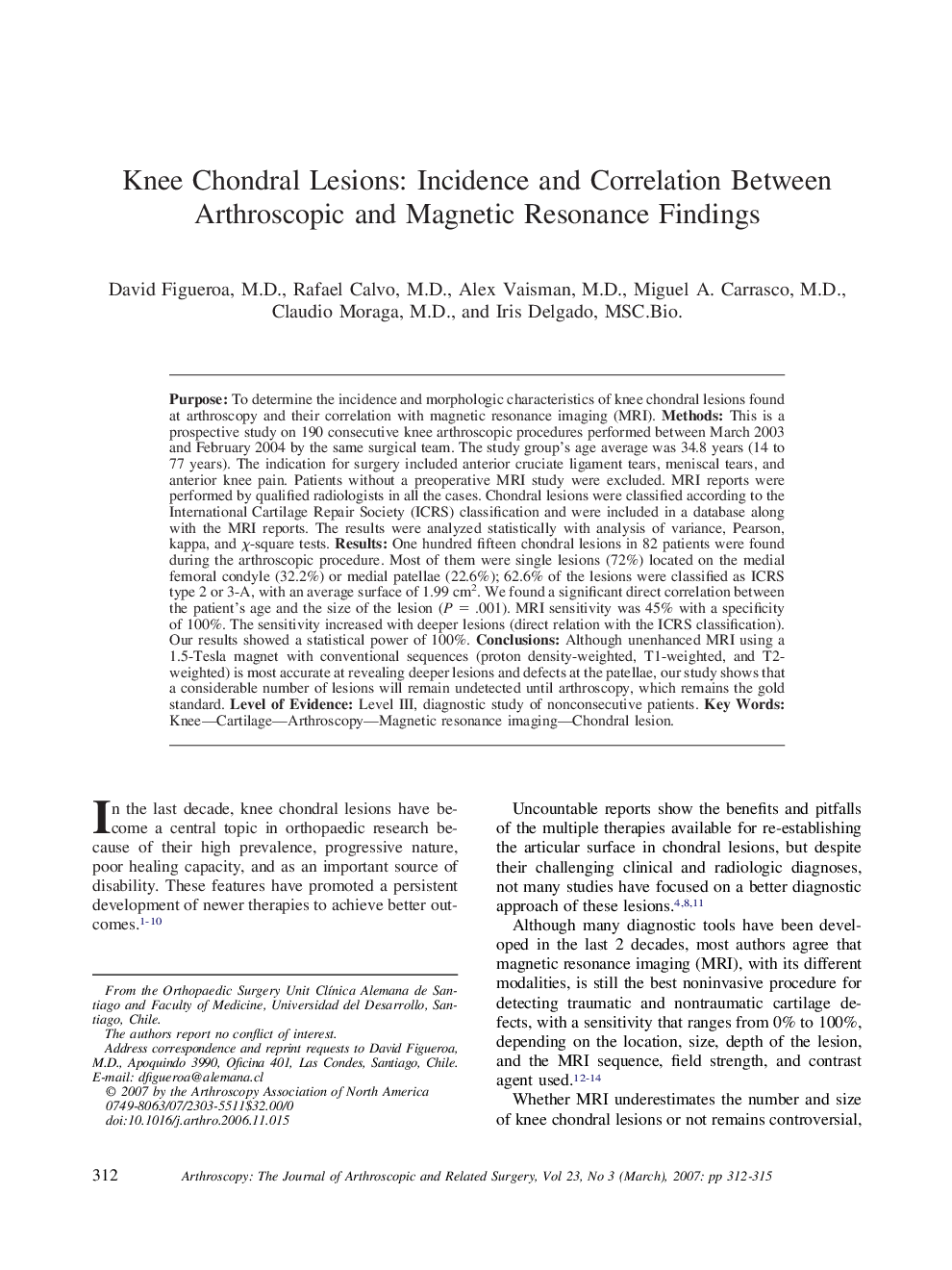| Article ID | Journal | Published Year | Pages | File Type |
|---|---|---|---|---|
| 4047624 | Arthroscopy: The Journal of Arthroscopic & Related Surgery | 2007 | 4 Pages |
Purpose: To determine the incidence and morphologic characteristics of knee chondral lesions found at arthroscopy and their correlation with magnetic resonance imaging (MRI). Methods: This is a prospective study on 190 consecutive knee arthroscopic procedures performed between March 2003 and February 2004 by the same surgical team. The study group’s age average was 34.8 years (14 to 77 years). The indication for surgery included anterior cruciate ligament tears, meniscal tears, and anterior knee pain. Patients without a preoperative MRI study were excluded. MRI reports were performed by qualified radiologists in all the cases. Chondral lesions were classified according to the International Cartilage Repair Society (ICRS) classification and were included in a database along with the MRI reports. The results were analyzed statistically with analysis of variance, Pearson, kappa, and χ-square tests. Results: One hundred fifteen chondral lesions in 82 patients were found during the arthroscopic procedure. Most of them were single lesions (72%) located on the medial femoral condyle (32.2%) or medial patellae (22.6%); 62.6% of the lesions were classified as ICRS type 2 or 3-A, with an average surface of 1.99 cm2. We found a significant direct correlation between the patient’s age and the size of the lesion (P = .001). MRI sensitivity was 45% with a specificity of 100%. The sensitivity increased with deeper lesions (direct relation with the ICRS classification). Our results showed a statistical power of 100%. Conclusions: Although unenhanced MRI using a 1.5-Tesla magnet with conventional sequences (proton density-weighted, T1-weighted, and T2-weighted) is most accurate at revealing deeper lesions and defects at the patellae, our study shows that a considerable number of lesions will remain undetected until arthroscopy, which remains the gold standard. Level of Evidence: Level III, diagnostic study of nonconsecutive patients.
